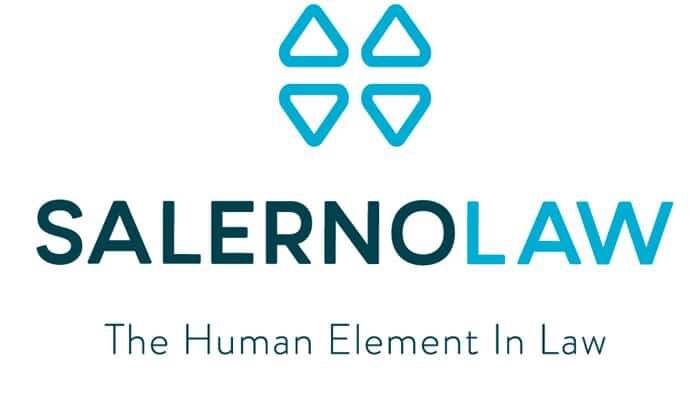Selling your home is a big decision, therefore it is important that you understand your rights, responsibilities and the legal process involved. The process of selling a home is different in every Australian State and Territory. This article covers the process in Queensland.
What is Conveyancing?
Conveyancing is the legal term used for the transaction of buying or selling a property. A lawyer plays an important part in this process because we understand the Contract and all the forms and processes involved. Selling a property will be a large change to a person’s financial position.
When a seller signs a Contract this does not mean that the buyer then legally owns the property:
- There will be a process of the seller’s lawyer dealing with the buyer’s lawyer, real estate agents and banks. A conveyance usually takes between 4 to 6 weeks.
- A Contract will usually contain conditions to be fulfilled by certain dates. If the buyer organises a building and pest inspection that reveals a bad result, or cannot obtain finance from their bank by a certain date then they may be entitled to terminate the Contract. This means they can walk away and are released from further obligations under the Contract and they will have their deposit returned.
- A property must have a ‘clear title’ in order to be sold – meaning no restrictions that prevent a sale. A lawyer carries out searches to determine whether the seller has the right to sell the property.
- The conveyancing process leads up to ‘settlement or ‘completion’ – this is the day when the banks, seller’s and buyer’s lawyers exchange the money and other documents, and the keys are released.
A seller should remember that time is of the essence of the Contract. This means that things must be done by their due dates because neither a buyer nor a seller has an obligation to grant extensions. An example is the obligation of the seller to settle the sale on the settlement date. Time limits are strict and failure to comply by a due date can have drastic consequences. Our lawyers help the transaction move smooth and swiftly.
What a Seller Must do in the Early Stages of a Conveyance
1. Sign the Contract
We are often approached by sellers either just before or after signing a Contract to sell their home. We prefer to speak to clients before they sign. That way we can explain the terms and ensure the conditions are appropriate.
The buyer is usually required to pay an initial deposit to the real estate agent on the day of signing the Contract. Sellers should be mindful that buyers of residential property are also entitled to a 5 business day ‘cooling off’ period starting on the day they sign the Contract. This means that if a buyer changes their mind about the purchase then they can terminate the Contract. However the seller can charge a termination penalty of 0.25% of the purchase price. So while the percentage is small it can still amount to a significant sum.
2. Apply for a Release of Mortgage
If the seller has a mortgage over the property, then this needs to be released by settlement. After signing the Contract, the seller needs to contact their bank to arrange for the mortgage to be released. This should be done as early as possible.
3. ATO Clearance Certificate
If the sale price is over $750,000, then the seller must provide a Clearance Certificate to the buyer on or before settlement. If this isn’t provided, then a portion of the purchase price must be withheld from the money paid to the seller at settlement and instead be paid to the Australian Taxation Office. An application for a Clearance Certificate must be made by the seller online and the Clearance Certificate can then take up to 30 days to be issued. Therefore an application should be made as soon as possible.
What We do for a Seller in the Early Stages of a Conveyance
After the seller and buyer have signed the Contract, the real estate agent will send us the Contract. We then calculate and diarise all the critical dates in the Contract and let our client and the other solicitors know.
We will carry out a property title search. This gives us a description of the property, tells us who is the registered owner and if they have a mortgage on the property, as well as a range of other important information.
We’ll send the seller:
- A detailed letter telling them what we will be doing for them throughout the transaction.
- A conveyancing to-do list outlining the tasks that they are responsible for.
- A questionnaire asking for details that we need to complete the transaction. We ask that this be completed and returned as soon as possible.
The Steps in a Conveyance
1. Payment of the Balance Deposit
A condition of a Contract is often the buyer paying a balance deposit to be held by the real estate agent. This must be paid by the due date, and then we need to be notified.
2. Building and Pest Inspection Results
If the Contract is subject to a buyer being satisfied with building and pest inspection results, then the buyer or their solicitor must notify us by the due date whether or not the results are satisfactory.
If there are problems with the results, then we will try and reach a solution with the seller and the buyer. Some results may entitle the buyer to terminate the Contract.
3. Finance Approval
If a Contract is subject to the buyer obtaining finance approval, then the buyer or their solicitor must notify us by the due date whether or not finance has been approved. If finance has not been approved on satisfactory terms, that will entitle the buyer to terminate the Contract.
4. Release of Mortgage
When a seller applies to their financier for a release of mortgage, it is very important that they sign and return to their financier an authority that gives the bank permission to deal with us as their lawyers. We will liaise with the seller’s bank to ensure that the release of mortgage is ready for settlement.
5. Pre-Settlement Inspection
A buyer has the right to conduct a pre-settlement inspection of the property close to the settlement date to ensure everything is still in order.
What We do for a Seller in the Final Stages of a Conveyance
1. Prepare Funds for Settlement
Most settlements these days are done electronically so we coordinate arrangements with the buyer’s solicitor, the seller’s bank and the buyer’s bank.
The price shown on the Contract is not the final sum that is paid to the seller. We will prepare a ‘settlement statement’ that adjusts the sale price to show a breakdown of the total amount payable. This calculation will usually be the sale price, minus the deposit, minus the cost of releasing a seller’s mortgage (if any) and an addition or subtraction for rates and water, and Body Corporate levies if selling a unit. The buyer’s solicitor will conduct rates and water searches so that we know when everything is paid up to.
Because rates and water/sewerage access is usually paid in advance past the settlement date by the seller, the seller needs to be compensated. Because water usage isn’t paid in advance, the buyer needs to be compensated for bills they’ll receive in the future that cover the time the seller still owned the property.
If there are unpaid bills, we arrange for these to be paid on settlement.
2. Carry Out Settlement
We will carry out the settlement, where the seller’s release of mortgage, payments and transfer documents are exchanged. Immediately after settlement we will advise the agent to release the deposit to the seller, and the keys to the buyer.
What a Seller Should do After Settlement in a Conveyance
Because selling a home is a very big change to someone’s financial position, we always recommend that a seller updates their Will and Enduring Power of Attorney. Our wills and estates lawyers can assist a seller with this.
At Salerno Law a seller can rest assured knowing that their property sale will be in the hands of our experienced team from the start to finish of the transaction. If you would like to talk to us about the conveyancing services we offer, contact us to speak to one of our solicitors.
DISCLAIMER: This article is only meant to give you general information and should not be relied on as legal advice. Speak to one of our lawyers for more information.
Salerno Law is managed by Emma Salerno, Managing Partner and CEO, who has a wealth of experience from operating her own businesses across Australia as well as a range of in-house and commercial experience both in Australia and overseas.




Leave A Comment